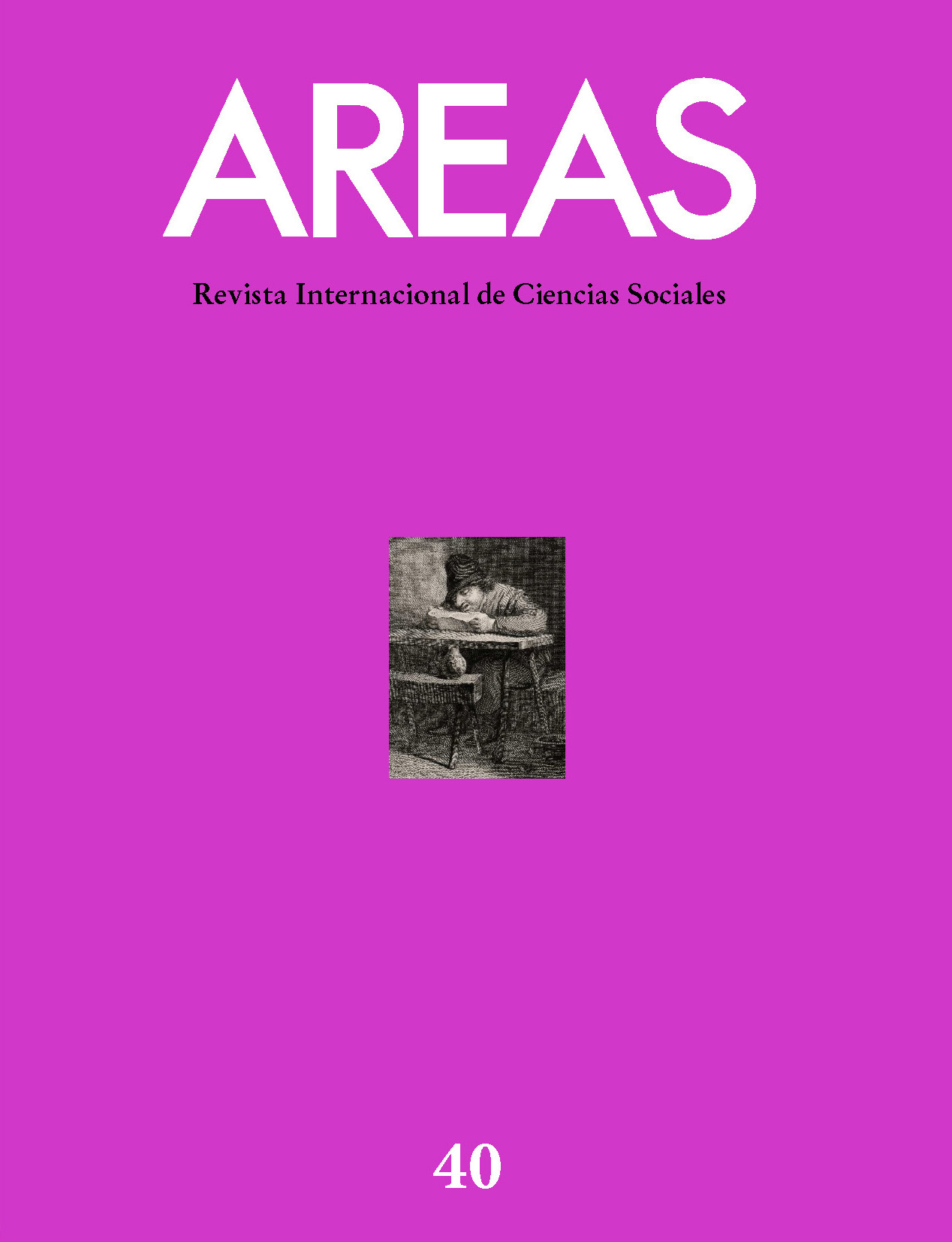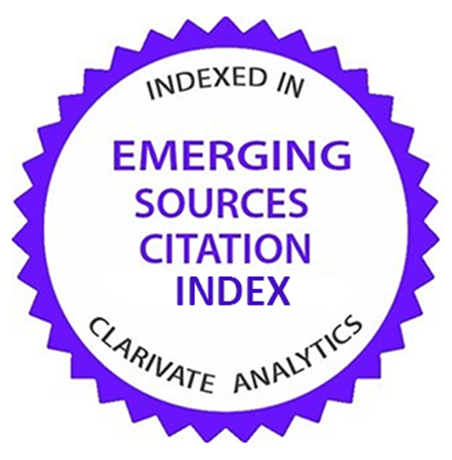The industrial buildings of the land of Seville in the late fifteenth century
Abstract
Some reports of the council of Seville of the 1490s, on a series of towns under their jurisdiction, allow us to know which buildings were in them dedicated to productive activities. It is an exceptional documentation that makes it possible to differentiate by regions and, depending on other sectors such as agriculture or commerce, which of them had greater industrial dedication, what type of sector was the principal and why it was located here and not in others districts; as well as its influence on local economic and demographic growth. To reach the conclusion that the lower endowment of resources for agriculture, together with the availability of others such as the abundance of water for mills or ceramic furnaces, were the engine for the manufacturing growth of the most mountainous regions of the kingdom of Seville.
Downloads
References
ARACIL, R. y GARCÍA BONAFÉ, M. (1974): “Industria doméstica e industrialización en España”, Hacienda Pública Española, 55.
BERNAL, A.M., COLLANTES DE TERÁN, A. y GARCÍA-BAQUERO, A. (1978): “Sevilla: de los gremios a la industrialización”, Estudios de historia social, 5-6.
BORRERO FERNÁNDEZ, M. (1983): El mundo rural sevillano en el siglo XV: Aljarafe y Ribera, Sevilla, Diputación Provincial.
CARRASCO TEZANOS, A. (2006): La sociedad campesina en la Sierra de Guadarrama a finales de la Edad Media, Al-Mudayna, Madrid.
COBOS RODRÍGUEZ, J.J. (2018): Documentos de los Reyes Católicos sobre Antequera en el Archivo General de Simancas, Registro General del sello (1475-1501), Libros EPCCM, Granada.
COLLANTES DE TERÁN SÁNCHEZ, A. (1976): “La tierra realenga de Huelva en el siglo XV”, Huelva en la Andalucía del siglo XV, II Jornadas de Estudios Medievales en Andalucía, Instituto de Estudios Onubenses Padre Marchena, Huelva.
COLLANTES DE TERÁN SÁNCHEZ, A. (1977): “Nuevas poblaciones del siglo XV en el reino de Sevilla”, Cuadernos de Historia, (Anexos de Hispania), 7.
COLLANTES DE TERÁN SÁNCHEZ, A. (1998): “La tierra realenga de Huelva: Una imagen fiscal”, Huelva en la Edad Media. Reflexiones, aportaciones y nuevas perspectivas veinte años después, Universidad de Huelva.
CÓRODOBA DE LA LLAVE, R. (1990): La industria medieval del Córdoba, Córdoba, Caja Provincial de Ahorros de Córdoba.
CÓRODOBA DE LA LLAVE, R. (1993): “Molinos y batanes de la Córdoba medieval”, Ifigea, 9, pp. 31-56.
CÓRODOBA DE LA LLAVE, R. (2002): “Sobre el origen y difusión de los Molinos de Regolfo”, III Jornadas de Molinología, Murcia.
FRANCO SILVA, A. (1987): El concejo de Alcalá de Guadaira a finales de la Edad Media, Sevilla, Universidad de Sevilla.
GARCÍA TAPIA, N. (1997): Los molinos tradicionales, Valladolid, Castilla Ediciones.
GARCÍA TAPIA, N. y CARRICAJO, C. (1990): Molinos de la provincia de Valladolid, Valladolid, Cámara Oficial de Comercio e Industria.
GONZÁLEZ ARCE, J.D. (2020): Un patrimonio concejil ingente: el almojarifazgo de los pueblos de Sevilla (ss. XIII-XV), Murcia, Sociedad Española de Estudios Medievales.
GONZÁLEZ ARCE, J.D. (en prensa 1): “Inmuebles de los pueblos de Sevilla dedicados a actividades económicas a finales del siglo XV”.
GONZÁLEZ ARCE, J.D. (en prensa 2): “La red molinar de la Sierra Morena occidental en el siglo XV”.
GONZÁLEZ TASCÓN, I. (2009): “Molinos y otros ingenios en tiempo del Quijote”, Actas V Congreso Internacional de Molinologia, Junta de Comunidades de Castilla La Mancha, Alcázar de San Juan.
GONZÁLEZ ENCISO, A. (1984): “La protoindustrialización en España”, Revista de Historia Económica, 2, 1.
KRIEDTE, P. MEDICK, H. y SCHLUMBOHM, J. (1986): Industrialización antes de la industrialización, Barcelona, Crítica.
MARTÍNEZ MARTÍNEZ, M. (1987): “Molinos hidráulicos en Murcia (ss. XIII-XV)”, Miscelánea Medieval Murciana, 14, pp. 219-250.
MENDELS, F. (1972): “Protoindustrialization: the first phase of the Industrialization Process”, Journal of Economic History, 32.
MÉNDEZ-CABEZA FUENTES, M. (1998): Los molinos de agua de la provincia de Toledo, Toledo, Institución Provincial de Investigaciones y Estudios Toledanos.
PÉREZ GALLEGO, M. (1992): Antequera a fines del siglo XV, Editorial Algazara.
PÉREZ-EMBID WAMBA, J. (1996): Aracena y su sierra. La formación de una comunidad andaluza (siglos XIII-XVIII), Huelva, Diputación Provincial.
PÉREZ-EMBID WAMBA, J. (1998): “Las Sierras de Aroche y Aracena: la formación de una unidad comarcal en el Reino de Sevilla durante la Baja Edad Media”, Huelva en la Edad Media: reflexiones, aportaciones y nuevas perspectivas veinte años después, Huelva, Universidad de Huelva.
RUCQUOI, A. (1983): “Molinos et aceñas au coeur de la Castille septentrionale”, Les espagnes médiévales : aspects economiques et sociaux : mélanges offerts à Jean Gautier Dalché, Les Belles Lettres.
SÁNCHEZ BENITO, J.M. y MELA MARTÍN, C. (1989): “Los molinos hidráulicos en el sistema agrario del siglo XV a través de un ejemplo. El Monasterio de Santa María de Aguilar de Campo”, Publicaciones de la Institución Tello Téllez de Meneses, 60, pp. 100-114.
TOTTÓ GIL, L. (1994): “Sobre la protoindustrialització: Reflexions a partir d’un cas local, Alcoi (segles XVI-XIX)”, Afers: fulls de recerca i pensament, 9.
TRIANO MILÁN, J.M. (2018): La llamada del rey y el auxilio del reino. Del pedido regio a las contribuciones de la Santa Hermandad (1406-1498), Sevilla, Universidad de Sevilla.
The published works by this Journal are subject to the following terms:
1. The Publication Service of the University of Murcia (the Editor) owns the copyright of its publications. It promotes and allows its use under the indicated licence in Section 2.
© Servicio de Publicaciones, Universidad de Murcia, 2011
2. Papers are digitally published under the licence Creative Commons Reconocimiento-NoComercial-SinObraDerivada 3.0 España (legal text). They can be copied, used, disseminated, transferred and publically presented if: i) the author is quoted, as well as the original source of publication (Journal, editorial and URL); ii) they are not used for commercial purposes; iii) the licence of use is mentioned.
3. Auto-file Conditions. It is allowed and authors are encouraged to digitally disseminate their pre-print versions (versions prior to review) and/or post-print (reviewed version accepted for its publication) since it promotes its early diffusion and the corresponding increase of quotes and scope within the academic community. RoMEO Colour: green.


